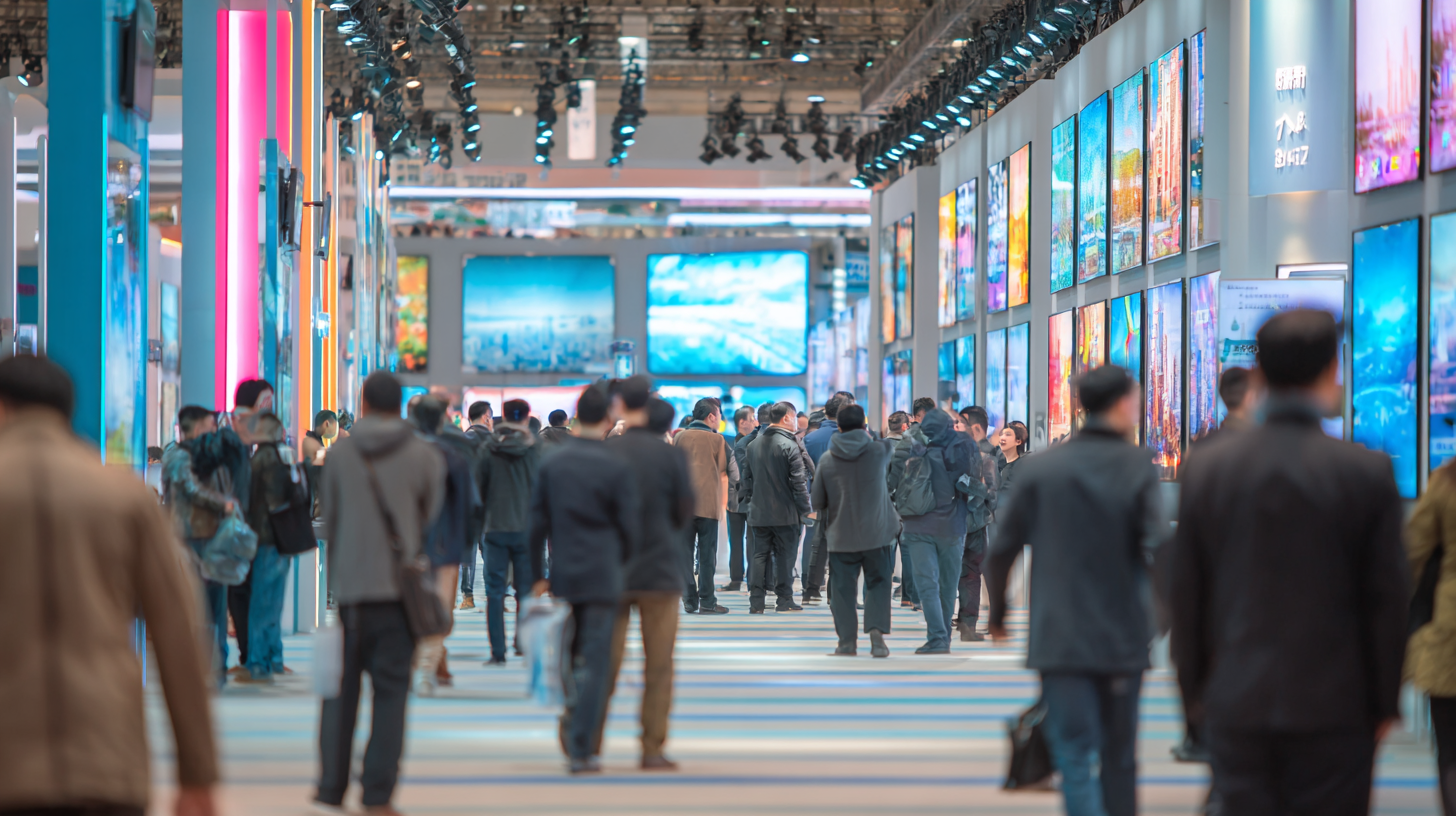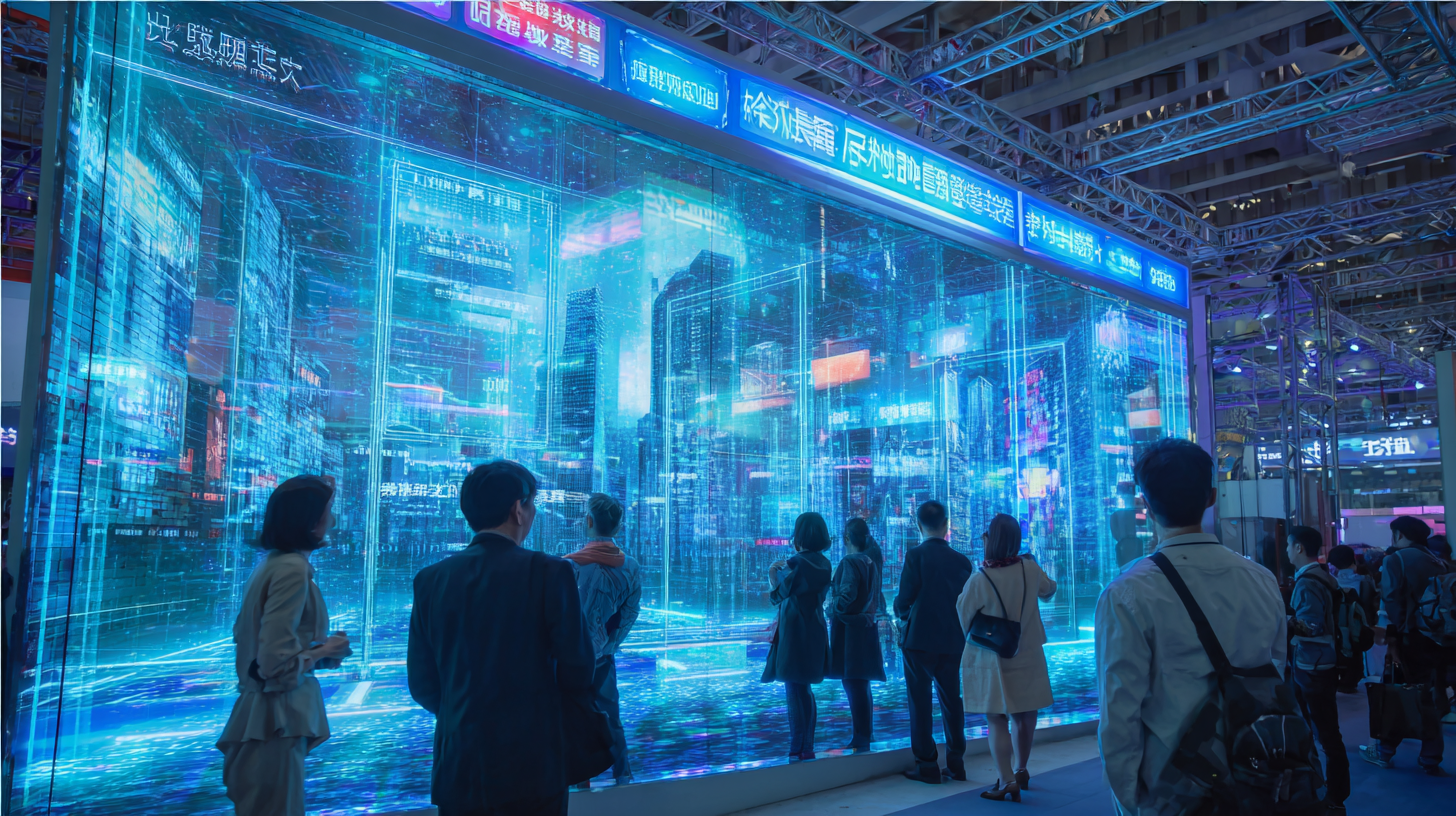



The 138th China Import and Export Fair in 2025 serves as a pivotal event for showcasing advancements in trade and technology, with a focus on the integration of Electronic Signs. As the global exhibition industry evolves, the use of electronic signage has become increasingly vital in enhancing visitor engagement and communication efficiency. According to a report by MarketsandMarkets, the electronic signage market is projected to reach USD 26.29 billion by 2025, driven by the rising demand for digital advertising solutions and interactive displays.

Electronic Signs, with their ability to deliver real-time information and visually appealing content, significantly improve the overall experience for attendees, making them an indispensable tool for exhibitors looking to capture attention in a crowded marketplace. This exploration will delve into the impact of these innovative displays on visitor interactions and the overall success of the Fair.
Electronic signs are transforming the visitor experience at trade fairs, particularly at the upcoming 138th China Import and Export Fair in 2025. According to a report by Event Marketer, 80% of attendees expressed that digital signage enhanced their experience by providing real-time information and wayfinding assistance. This shift not only facilitates navigation through the vast exhibition spaces but also helps exhibitors showcase their products more effectively. With the deployment of electronic signs, visitors can access schedules, highlight events, and get insights into exhibitors' offerings, leading to a more engaging and informative visit.
Tip: Ensure that the electronic signs are placed strategically throughout the venue to maximize visibility. Research indicates that well-placed signage can increase attendee engagement by up to 60%, making it vital for organizers to consider sightlines and high-traffic areas when planning their layout.
Moreover, electronic signs are not just informative; they also create an interactive environment. Features like QR codes and touch-screen interfaces enable visitors to tailor their experience, access additional content, and even participate in surveys on-site. A recent survey by the Digital Signage Federation revealed that over 70% of consumers are more likely to interact with a brand that uses digital signage effectively, thus highlighting the importance of integrating these technologies into the fair experience.
Tip: Incorporate interactive elements in your electronic signage to foster deeper connections with attendees. Engaging content can make a significant difference in how visitors perceive and remember the brands they interact with during the fair.
| Aspect | Description | Expected Impact | Visitor Feedback (%) |
|---|---|---|---|
| Navigation Assistance | Electronic signs provide real-time directions to various exhibition halls and facilities. | Improved visitor flow and reduced confusion. | 85% |
| Information Accessibility | Displays of event schedules, exhibitor details, and product information. | Enhanced knowledge of offerings available at the fair. | 78% |
| Interactive Elements | Touchscreen kiosks for personalized information retrieval. | Increased engagement and user satisfaction. | 90% |
| Multilingual Support | Support for multiple languages to cater to international visitors. | Greater inclusivity and understanding. | 82% |
| Real-time Updates | Live feeds of changes in schedule or emergency alerts. | Enhanced safety and real-time information availability. | 88% |
The use of digital signage has become increasingly prevalent at trade fairs, and the 138th China Import and Export Fair in 2025 is no exception. Digital signs can significantly enhance exhibitor engagement by delivering dynamic content that attracts and retains the attention of attendees. With vibrant visuals and real-time updates, exhibitors can showcase their products more effectively, create an immersive experience, and foster meaningful connections with potential clients.
To maximize the effectiveness of digital signage, exhibitors should consider a few tips. Firstly, the content must be clear and engaging; mixing visuals with concise text can create a compelling message. Secondly, leveraging interactive elements, such as touchscreens or QR codes, allows attendees to engage with the information actively. Lastly, strategically placing the signs in high-traffic areas ensures maximum visibility and can draw in curious visitors who may not have been previously aware of the exhibitor's offerings.
Incorporating digital signage is not just about aesthetics; it's about creating a strategic tool for communication. By embracing digital displays, exhibitors at the China Import and Export Fair can not only enhance their visibility but also establish a meaningful dialogue with fair attendees, ultimately boosting their chances of successful interactions and business outcomes.

The 138th China Import and Export Fair in 2025 offers a unique opportunity to compare traditional signage with electronic alternatives. Traditional signage has long been the backbone of trade shows, providing stability and a tactile experience for attendees. However, it lacks the dynamic capabilities that modern technology brings. Electronic signs, capable of displaying real-time information and engaging visuals, can adapt quickly to changing conditions, making them particularly powerful in a fast-paced exhibition environment.

A case study evaluating the effectiveness of electronic signage at the fair reveals significant advantages over traditional methods. Electronic signs can provide instant updates on event schedules, exhibitor locations, and even promotional content tailored to specific audiences. This adaptability enhances the visitor experience, facilitating better navigation and engagement. On the other hand, traditional signage, while more straightforward and often less expensive, fails to capture the immediate feedback and interactivity that electronic displays promote. Thus, as the fair continues to evolve, the shift towards electronic signage appears not only beneficial but essential for optimizing communication and enhancing overall attendee satisfaction.
The introduction of electronic signs at trade fairs such as the 138th China Import and Export Fair in 2025 represents a significant technological leap in the way information is communicated. These innovative display solutions not only enhance visibility but also engage attendees through dynamic content delivery. According to a report from the Digital Signage Federation, digital signage can increase viewer engagement by up to 400%, making it a critical tool for exhibitors aiming to capture attention in a crowded environment.
At events like CES 2025, recent showcases of cutting-edge display technology illustrate the rapid evolution of electronic signage. With advancements in display resolution and interactive features, brands can now present rich media experiences that resonate with potential customers. The latest data suggests that the global digital signage market is expected to grow to $32.84 billion by 2025, reflecting a 10% CAGR. This growth highlights the ongoing shift towards more technologically advanced solutions in exhibiting and advertising—transforming how businesses interact with their target audience.
The evolution of electronic signs is transforming the landscape of international trade events, exemplified by their prominent role at the 138th China Import and Export Fair in 2025. As exhibitors and organizers seek more efficient ways to engage visitors, electronic signs offer dynamic and versatile solutions. From digital displays that showcase real-time information to interactive screens that enhance visitor experience, these technologies allow for a more immersive environment, effectively bridging the gap between exhibitors and potential clients.
Looking ahead, the future trend of electronic signs in trade events will likely lean towards even greater personalization and integration with emerging technologies. With advancements in artificial intelligence and data analytics, electronic signs could tailor content to meet the specific interests of attendees, making communication more effective. Furthermore, the incorporation of augmented reality could offer visitors an enhanced view of products and services, creating a unique platform for engagement that traditional signage cannot replicate. As the international trade arena continues to expand, electronic signs will play an increasingly vital role in shaping how businesses connect and communicate.






